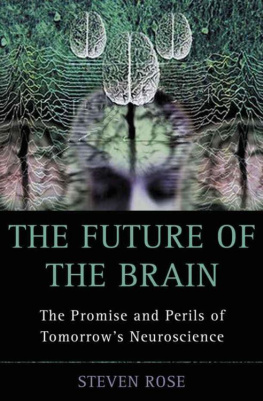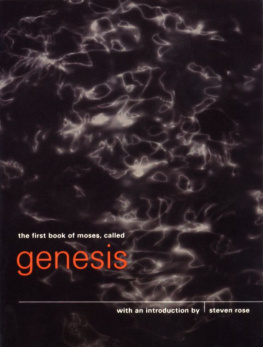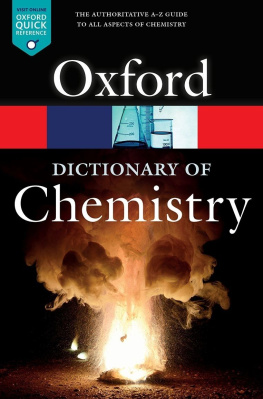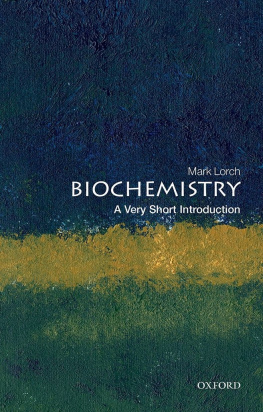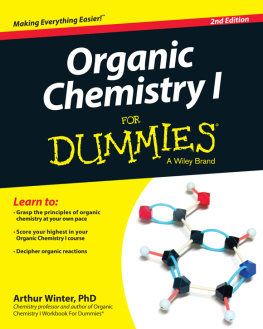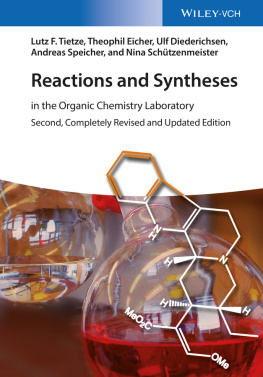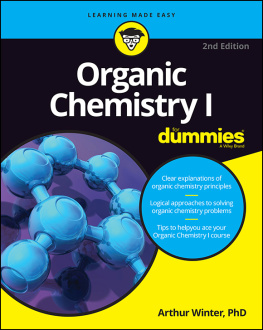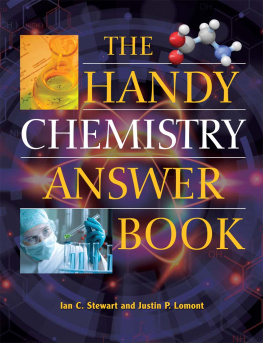Steven Rose - The Chemistry of Life
Here you can read online Steven Rose - The Chemistry of Life full text of the book (entire story) in english for free. Download pdf and epub, get meaning, cover and reviews about this ebook. City: London, year: 1999;2009, publisher: Penguin Books Ltd, genre: Romance novel. Description of the work, (preface) as well as reviews are available. Best literature library LitArk.com created for fans of good reading and offers a wide selection of genres:
Romance novel
Science fiction
Adventure
Detective
Science
History
Home and family
Prose
Art
Politics
Computer
Non-fiction
Religion
Business
Children
Humor
Choose a favorite category and find really read worthwhile books. Enjoy immersion in the world of imagination, feel the emotions of the characters or learn something new for yourself, make an fascinating discovery.

- Book:The Chemistry of Life
- Author:
- Publisher:Penguin Books Ltd
- Genre:
- Year:1999;2009
- City:London
- Rating:4 / 5
- Favourites:Add to favourites
- Your mark:
- 80
- 1
- 2
- 3
- 4
- 5
The Chemistry of Life: summary, description and annotation
We offer to read an annotation, description, summary or preface (depends on what the author of the book "The Chemistry of Life" wrote himself). If you haven't found the necessary information about the book — write in the comments, we will try to find it.
First published in 1966, THE CHEMISTRY OF LIFE has held its own as a clear and authoritative introduction to the world of biochemistry. This fourth edition has been fully updated and revised to include the latest developments in DNA and protein synthesis, cell regulation, and their social and medical implications.
The Chemistry of Life — read online for free the complete book (whole text) full work
Below is the text of the book, divided by pages. System saving the place of the last page read, allows you to conveniently read the book "The Chemistry of Life" online for free, without having to search again every time where you left off. Put a bookmark, and you can go to the page where you finished reading at any time.
Font size:
Interval:
Bookmark:
PENGUIN BOOKS
THE CHEMISTRY OF LIFE
Steven Rose is Professor of Biology and Director of the Brain and Behaviour Research Group at the Open University. A biochemist by training, his research centres on the molecular and cellular mechanisms of memory formation, although he has also written and worked extensively on issues concerning the social framework and consequences of science. He is the author of many books, including, in Penguin, The Chemistry of Life (first published in 1966, now in its fourth edition), Lifelines (1997) and, with Richard Lewontin and Leon Kamin, Not in Our Genes (1984), and the editor of From Brains to Consciousness? (1998; Penguin, 1999). Steven Rose won the 1993 Rhne-Poulenc Science Book Prize for The Making of Memory.
Radmila Mileusnic was born in the former Yugoslavia in 1947, and received her first degree in biology at the Faculty of Natural Sciences and Mathematics, University of Belgrade. After taking post-graduate studies in Molecular Biology, she joined the Institute of Biochemistry at the School of Medicine and in 1978 obtained her Dr. Sc. In 1984 she was awarded an Alexander von Humboldt Fellowship and in 1991 became Professor of Biochemistry at the School of Medicine, University of Belgrade. She left Yugoslavia in 1993 and joined the Brain and Behaviour Research Group at the Open University, where she continues her two-decade long collaboration with Steven Rose. In 1995 she became a lecturer in Molecular Biology at the Open University.
STEVEN ROSE
WITH
RADMILA MILEUSNIC
Fourth Edition

PENGUIN BOOKS
PENGUIN BOOKS
Published by the Penguin Group
Penguin Books Ltd, 80 Strand, London, WC2R 0RL , England
Penguin Putnam Inc., 375 Hudson Street, New York, New York 10014, USA
Penguin Books Australia Ltd, Ringwood, Victoria, Australia
Penguin Books Canada Ltd, 10 Alcorn Avenue, Toronto, Ontario, Canada M4V 3B2
Penguin Books (NZ) Ltd, Private Bag 102902, NSMC, Auckland, New Zealand
Penguin Books Ltd, Registered Offices: 80 Strand, London, WC2R 0RL , England
First published in Pelican Books 1966
Reprinted with revisions 1970
Second edition 1979
Third edition published in Penguin Books 1991
Fourth (revised) edition 1999
Copyright Steven Rose, 1966, 1970, 1979, 1991, 1999
All rights reserved
The moral right of the author has been asserted
Except in the United States of America, this book is sold subject to the condition that it shall not, by way of trade or otherwise, be lent, re-sold, hired out, or otherwise circulated without the publisher's prior consent in any form of binding or cover other than that in which it is published and without a similar condition including this condition being imposed on the subsequent purchaser
ISBN: 978-0-14-192698-8
For Hilary
who still demands that biochemistry be intelligible, but also that it be modest and responsible enough to know its own place in the scheme of things
TO THE FOURTH REVISED EDITION, 1999
The first edition of The Chemistry of Life was published in 1966. I had only a few years since completed a classical biochemistry training at Cambridge, done a PhD in brain biochemistry in London and was completing a post-doctoral period in Rome when I wrote the book in 19634. I was very young and full of optimism at the time, a biochemical positivism which reflected the exuberant atmosphere of the advances in biochemical knowledge of the period. Such knowledge might not change the world, I thought, but it would help explain it, and I believed then, as I believe now, in the importance of opening up science and making it accessible to those outside the arcane elitism with which it is often surrounded. By the time the first fully revised edition appeared in 1979, I was more conscious of the problematic nature of the reductionist framework within which the book was set, and I had begun to find the relationship between my science and the social and philosophical context in which it is embedded more troubling and less self-evident than when I originally wrote it. These issues have concerned me increasingly over the years, and not least when I contemplated preparing this, the fourth, and (it may be) the final revision of the text during my research lifetime.
I never intended The Chemistry of Life as a textbook, but rather to convey some of the excitement I felt in my subject to a lay reader, by discussing its central concepts and methods without an overload of data and didactic presentation. However, perhaps by default and lack of alternatives, it soon found its way into schools and basic college biochemistry courses, and this use was extended during the 1970s when it became a set text for the original Open University Science Foundation Course. It is both flattering and rather chastening to have met over the past decades so many people who tell me that it was reading this book which persuaded them to study biochemistry at university. No author could deny hearing this with some pleasure, but I am never sure that those who made the choice in part as a result of reading it feel that it was the right one for them! In any event it has been a source of both surprise and happiness to me that a book I wrote first as a young post-doc should in this new incarnation be about to see my research career into its final years.
Of course, what counts as biochemistry has changed profoundly over these more than three decades. It isn't only that there has been at least a tenfold increase in the known biochemical facts about the world, and several revolutions in research techniques, but that the conceptual framework within which those facts are organized and experiments conducted has been transformed. A biochemistry textbook which is written ab initio by a novice biochemist at the start of the 21st century would probably be organized rather differently from the way I originally arranged this one. Indeed, it might well turn out to be a molecular biology text instead. So with each new edition I have been confronted with the question of whether to retain something recognizably like the original format or to radically rethink it. I don't believe it is either innate conservatism or mere laziness which has led me to keep the original shape, but rather as a way of arguing that this remains a meaningful and accessible way of introducing biochemical ideas.
Biochemistry today lies in a mixed terrain between the expansionist claims of molecular biology and genetics, disciplines with a recognizably different philosophy and methodology despite their common inheritance, and the increasingly ordered understanding of cell biology, physiology and indeed evolutionary biology which together are unifying many areas of science which previously were seen as unrelated.
Further, while at the time of the first edition of the book the industrial uses of biochemistry were largely confined to fermentation technology and the increasing power of the pharmaceutical industry, today biotechnology and genetic engineering terms which didn't even exist in the early 1960s have become part of daily newspaper fare both for the claims they make to change the world we live in and for the social, economic and ethical dilemmas which their untrammelled development are seen to raise.
So, even despite the temptations of expanding in the direction of my own research interests in the biochemistry and cell biology of brain function, I have finally decided to keep the essential structure and mode of analysis of the original edition in place, with its central concern with the biochemistry of mammals, especially humans, and its themes of biochemistry as analysis, as metabolism and as control very definitely therefore a biochemical and not a molecular or cell biological agenda. The treatment of these themes is of course greatly modified from the original, but the early chapters from the basic chemical concepts of , also reflects the considerable input of her partner, the distinguished immunologist Miroslav (Mirko) Simic. I am heavily indebted to them both. This new edition also contains a thoroughly revised and expanded set of illustrations. Once again I would like to thank Penguin Books, and my successive editors there, Ravi Mirchandani and Stefan McGrath, for their willingness to keep this old war-horse in harness.
Next pageFont size:
Interval:
Bookmark:
Similar books «The Chemistry of Life»
Look at similar books to The Chemistry of Life. We have selected literature similar in name and meaning in the hope of providing readers with more options to find new, interesting, not yet read works.
Discussion, reviews of the book The Chemistry of Life and just readers' own opinions. Leave your comments, write what you think about the work, its meaning or the main characters. Specify what exactly you liked and what you didn't like, and why you think so.

